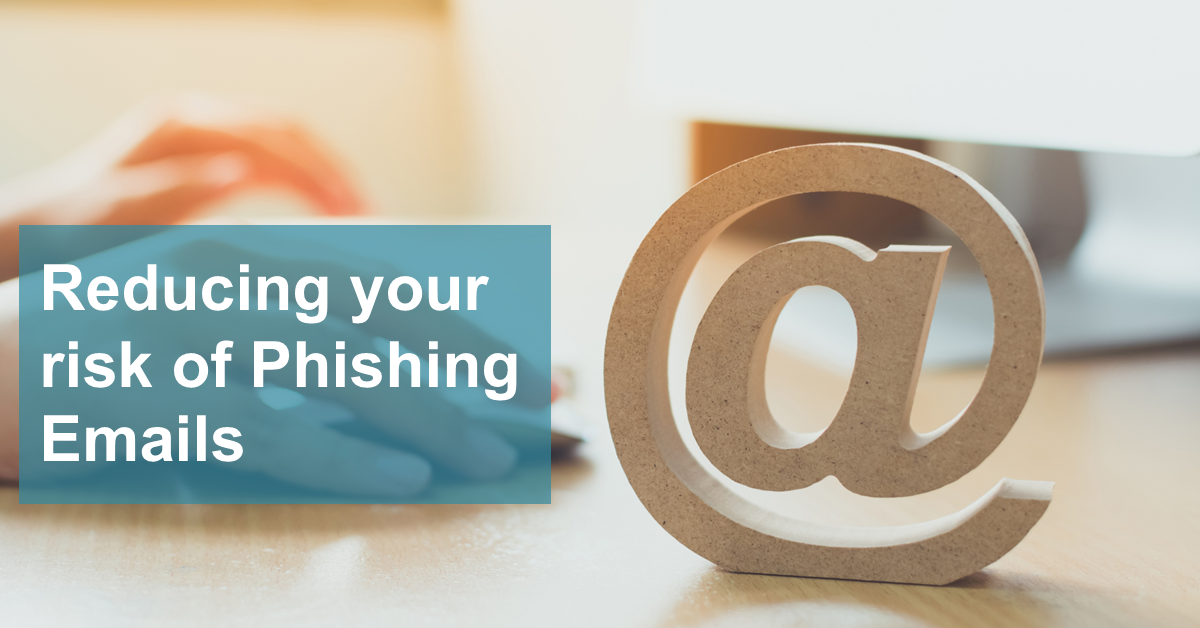Phishing Emails: how to reduce your risks
Whilst a lot of people understand the concept of phishing attacks, it remains one of the most common causes of cyber attacks.
Small and new business owners are often the target of these scams as hackers assume they do not have the robust cyber security measures in place of larger businesses. Phishing emails have also evolved and are now incredibly sophisticated and personalised.
This blog aims to explain what ‘phishing’ is, how it works, and provide practical advice on how to protect your business from these deceptive threats.
What is Phishing?
Phishing is a cyber attack method where attackers disguise themselves as legitimate entities – or people – to steal sensitive information such as usernames, passwords, and credit card details. The term “phishing” is derived from “fishing,” where attackers lure victims into providing their information by using bait—often a seemingly trustworthy email or message.
To explain it simply, imagine receiving a letter that looks like it’s from your bank, asking you to confirm your account details. Because it appears legitimate, you might be tempted to comply. Phishing emails operate similarly, using deception to gain your trust.
Why Small and New Australian Business Owners Should Care About Phishing
In Australia, phishing remains a significant cyber threat. According to the Australian Cyber Security Centre (ACSC), phishing attacks are on the rise, targeting businesses of all sizes.
However, small and new business owners should be particularly vigilant as phishing can lead to substantial financial loss, reputational damage, and even cause company closures.
How Does Phishing Work?
- Bait Creation: Attackers create a convincing message or email that appears to come from a trusted source. This could be a bank, a business partner, or a well-known company. The email often contains logos, names, and formatting like legitimate communications to increase credibility.
- Luring the Victim: The email typically includes a call to action, such as clicking a link, downloading an attachment, or providing personal information. This might be framed as an urgent request or a too-good-to-be-true offer, exploiting emotions like fear or curiosity.
- Hooking the Victim: Once the victim engages with the email (e.g., clicking a link), they are directed to a fraudulent website that mimics a legitimate one. Here, they might be asked to enter sensitive information.
- Reeling in the Catch: The entered information is captured by the attackers and used for malicious purposes. This could involve accessing accounts, stealing identities, or selling the information on the dark web.
How to Safely Implement Anti-Phishing Measures in Your Business:
- Educate Yourself & Your Team: Attend regular training sessions to raise your awareness about phishing. It’s important for you to learn to identify phishing attempts and understand the importance of not clicking on suspicious links or attachments.
For FREE cyber security training, you can visit: https://jamcyber.com/nsea/
- Block HTML and HTM File Attachments: Most phishing campaigns come in via HTML and HTM file attachments. As most people do not need these, blocking them is a quick and easy way to reduce phishing scam risk. Check out Jam Cyber’s instructions on how to do this in Outlook 365 and Google Workplace.
- Implement Email Filters: Use advanced email filtering solutions to block phishing emails before they reach your inbox. These tools can detect and quarantine emails based on known phishing signatures and suspicious content.
- Enable Multi-Factor Authentication (MFA): MFA adds an extra layer of security by requiring multiple forms of verification before accessing accounts. This reduces the risk of attackers gaining access with stolen credentials.
- Regular Updates and Patches: Ensure all software and systems are up-to-date with the latest security patches. Vulnerabilities in outdated software can be exploited by phishing attacks.
- Utilise Anti-Phishing Tools: Employ tools and software specifically designed to detect and prevent phishing attempts. These can include browser extensions, anti-phishing toolbars, and endpoint security solutions.
The Key Benefits of Implementing Anti-Phishing Tactics in Your Business
Setting your business up to stop phishing attacks provides more benefits than simply reducing the risk of cyber attacks. And, as a new or small business, putting strategies in place now can help set your future firm up to be cyber safe.
Here are some additional benefits:
Improved Customer Confidence
By safeguarding against phishing attacks, you demonstrate a commitment to protecting customer data, which helps build and maintain customer trust. This confidence can lead to increased customer loyalty and positive word-of-mouth for your business.
Cost-Effective Security
Implementing anti-phishing measures can be a cost-effective way to protect your business compared to the high costs associated with recovering from a phishing attack. Investing in preventive measures saves money in the long run by avoiding costly breaches and system downtime.
Streamlined Training and Awareness
Anti-phishing measures often include training programmes that educate your employees about recognising and responding to phishing threats. This not only strengthens your overall security posture but also empowers your team with valuable cybersecurity knowledge.
Enhanced Vendor and Partner Relationships
An anti-phishing strategy can improve your relationships with vendors and partners. By demonstrating your commitment to cyber security, you instil confidence in your business practices, potentially leading to more favourable terms and collaborations.
Winning New Contracts with Major Businesses
These days, most major companies prioritise cyber security when selecting suppliers. Therefore, having cyber security measures in place can significantly enhance your business’s appeal to larger enterprises.
Next steps:
If you need assistance in implementing anti-phishing measures or enhancing your cyber security strategy, contact Jam Cyber at https://jamcyber.com/nsea/
NSEA has partnered with Jam Cyber to help our participants stay ahead of cyber threats and thrive in their business journey.





